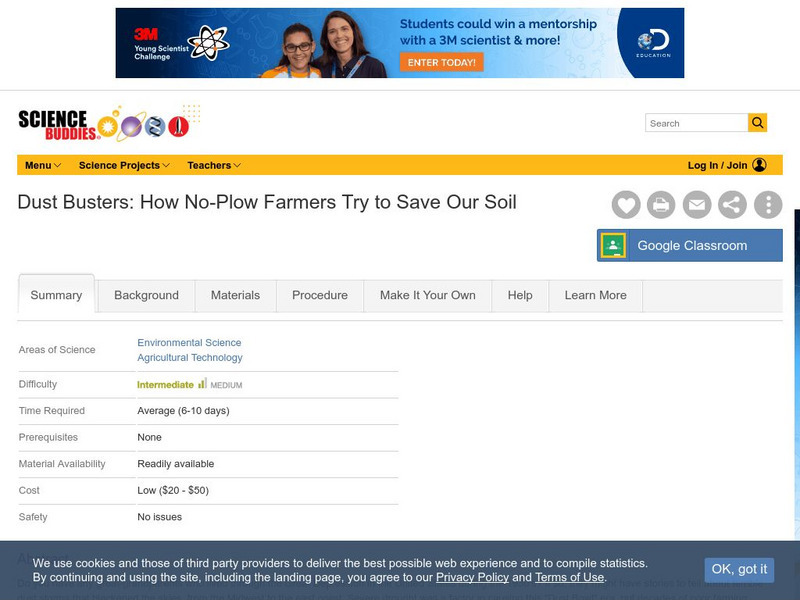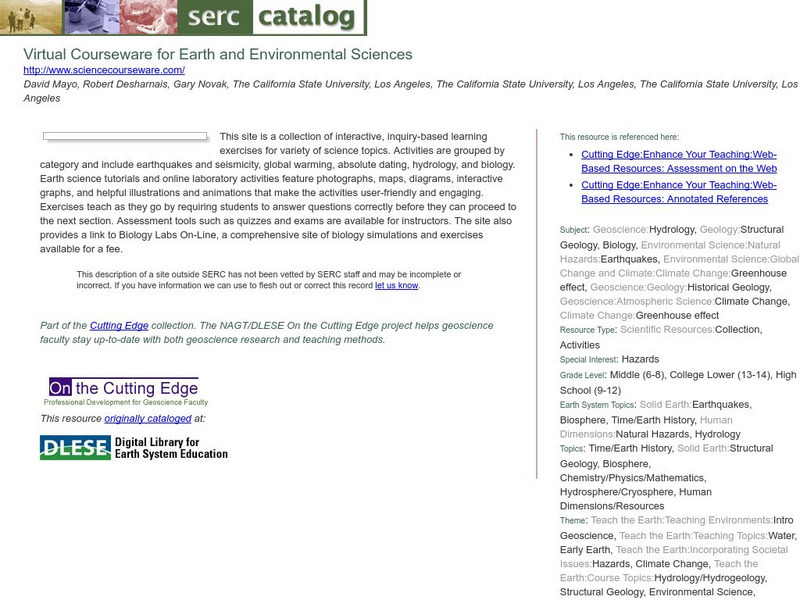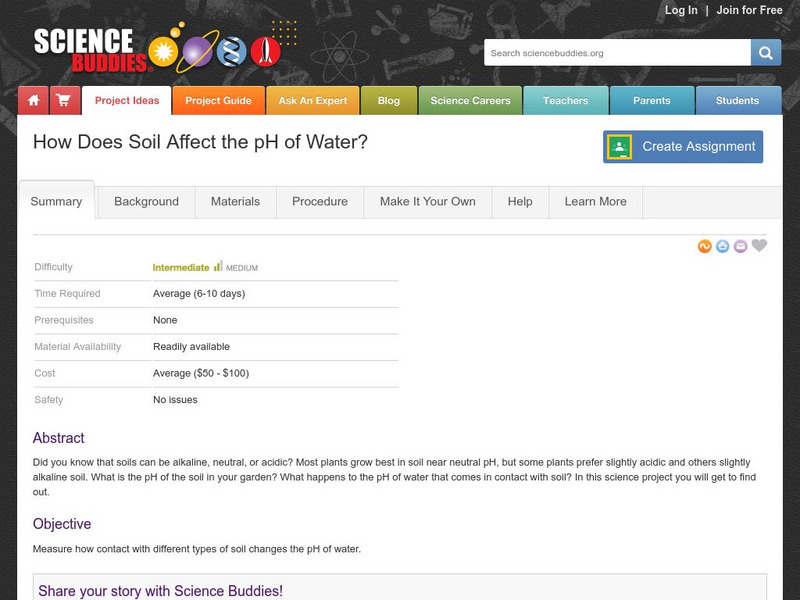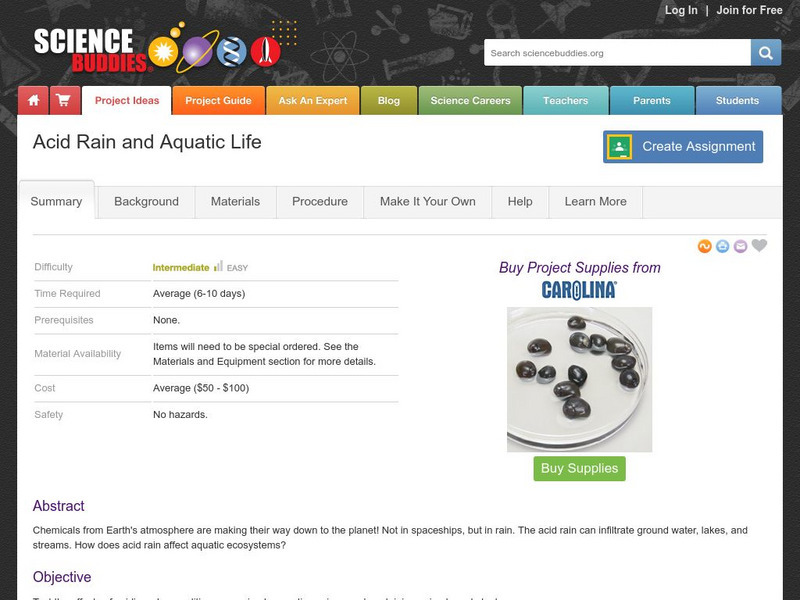Curated OER
Loggerhead Nest Management Program
Students identify the sea turtle management documentary and complete an activity for each slide. They plot the location of nests laid on the island they patrol and discuss their rationale for management decisions. Finally, students...
Curated OER
Earth Day
Third graders utilize technology to access, analyze, interpret and communicate information about Earth Day.
Curated OER
Weather for Health
Ninth graders encounter various types of numerical information (represented in multiple ways), much of which is abstract and difficult to comprehend. In this lesson, 9th graders will convert given information into bar graphs. In the...
Curated OER
The Reality of War
High schoolers use research materials developed earlier. They synthesize data to formulate an argument for or against war. Students use their notes to address what the possible answers could be.
Science Buddies
Science Buddies: It's Raining, It's Pouring: Chemical Analysis of Rainwater
Here is an interesting project that could be approached from several different scientific angles: Environmental Science, Weather & Atmosphere, Chemistry, or Plant Biology. You can probably think of your own variations to emphasize...
Science Buddies
Science Buddies: Getting Carried Away: Measuring Soil Erosion
When you think of environmental challenges facing the world, the first things that come to mind might be global warming, or loss of biodiversity, since these are often in the newspapers. A serious problem that you may not have heard...
Science Buddies
Science Buddies: Are There Dangerous Levels of Lead in Local Soil?
The element lead is a neurotoxin that is particularly dangerous to young children. Among other uses, lead compounds were common paint additives until being phased out for safer titanium-based additives beginning in the 1960's. Lead...
Science Buddies
Science Buddies: Get Down and Dirty: How Does Soil Change With Depth?
What covers less than 10% of the Earth's surface, yet is a vital natural resource for terrestrial life? What filters ground water and supports most of our food production, not to mention the production of building materials and paper?...
Science Buddies
Science Buddies: Mapping Troposhperic Ozone Levels Over Time
Ozone in the stratosphere protects the earth by absorbing harmful ultraviolet radiation from the sun. However, when ozone occurs in the troposphere, it is harmful to health. In this project you can use data from EPA monitoring stations...
Science Buddies
Science Buddies: How Diets Affect Earthworms and the Soil They Enrich
In this environment-oriented experiment, you will mix it up with earthworms, soil, and various types of organic kitchen scraps. The basic idea is to set up small earthworm colonies to compost different types of food waste. You test the...
Science Buddies
Science Buddies: Using Daphnia to Monitor Water Toxicity
In a bioassay, a living organism serves as a detector for toxins-the same way canaries were used in coal mines to detect invisible toxic gases. In this project, water fleas (Daphnia magna), a freshwater crustacean, are used in a bioassay...
Science Buddies
Science Buddies: The Effect of Artificial Light on Migration Pattern of Daphnia
This elegant project employs a scientific approach that is particularly valuable in Environmental Science, but can be applied to other areas as well. The approach has three steps: 1) from your observations in the field, form a...
Other
Minnesota 4 H: Environmental Science Career Guide [Pdf]
Browse this guide to careers in the field of environmental science. Includes potential employers and job possibilities in Minnesota.
Science Buddies
Science Buddies: Project Ideas: Crystal Ball Math: Predicting Population Growth
In this environmental science fair project, students will learn some of the ways in which the population growth of animals is modeled, and then use the logistic model to determine how a population grows when it starts far below, at, or...
Science Buddies
Science Buddies: Froggy Forecasting: How Frog Health Predicts Pond Health
Have you ever heard the expression "a canary in a coal mine"? In the 1900s and earlier, coal miners brought canaries with them into the mines to act as early warning signals. The canaries were very sensitive to low levels of dangerous...
Science Buddies
Science Buddies: Dust Busters: How No Plow Farmers Try to Save Our Soil
In this environmental science fair project, students will build models of fields prepared by plow-based and no-till methods, and see which ones are best at retaining soil moisture and preventing surface runoff.
Science Education Resource Center at Carleton College
Serc: Virtual Courseware for Earth and Environmental Sciences
The Virtual Courseware Project produces interactive, online simulations for the life science laboratory or for earth science studies. The activities are designed to enhance an existing curriculum and include online assessments. They can...
Science Buddies
Science Buddies: Home Sweet Biome: How Do Plants Grow in Different Environments?
In this science fair project you will learn about biomes and how different climatic conditions affect plant growth. This can explain why some plants and animals are similar in different areas of the country, and in other parts they are not.
Science Buddies
Science Buddies: Are There Bugs Under Your Feet?
Within the grass there are millions of micro-invertebrates. Learn how to catch them by making a Berlese funnel in this fun project that will teach you about soil.
Science Buddies
Science Buddies: Air Particles and Air Quality
What does the phrase, "Like a breath of fresh air," mean to you? This common phrase can have different meanings: calming, relaxing, invigorating, energizing or clean. In this experiment you will test the quality of air by measuring the...
Science Buddies
Science Buddies: The Big Dig
Even though many cities have recycling programs, a lot of trash still ends up in the dump. Find out which materials will break down and which materials won't. Will the results of this experiment change which products you often buy?
Science Buddies
Science Buddies: How Does Soil Affect the P H of Water?
Did you know that soils can be alkaline, neutral, or acidic? Most plants grow best in soil near neutral pH, but some plants prefer slightly acidic and others slightly alkaline soil. What is the pH of the soil in your garden? What happens...
Science Buddies
Science Buddies: I'm Trying to Breathe Here! Dissolved Oxygen vs. Temperature
To survive, we need oxygen in the air we breathe. Oxygen is also essential for most aquatic organisms, but there is much less oxygen available in water than in air. Learn how to measure dissolved oxygen and then see how oxygen...
Science Buddies
Science Buddies: Acid Rain and Aquatic Life
Chemicals from the Earth's atmosphere are making their way down to the planet. Not in spaceships, but in rain. The acid rain can infiltrate ground water, lakes, and streams. How does acid rain affect aquatic ecosystems?







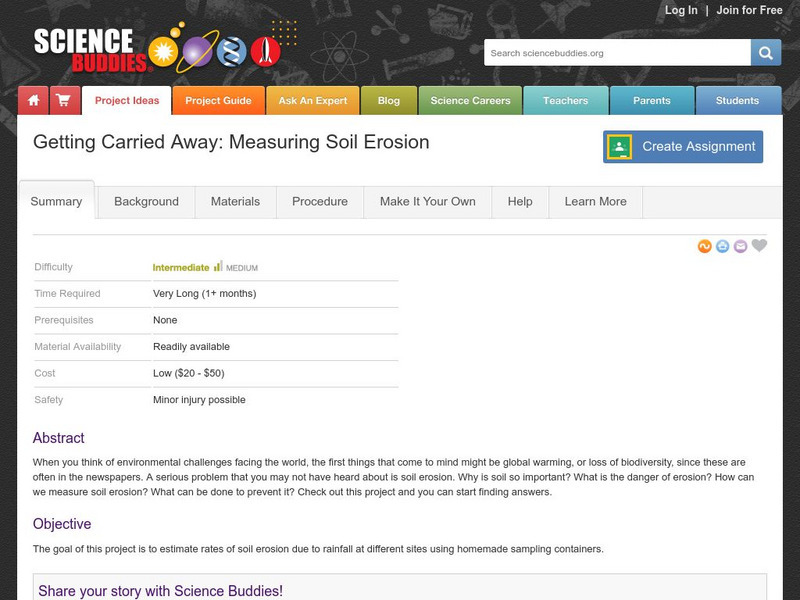




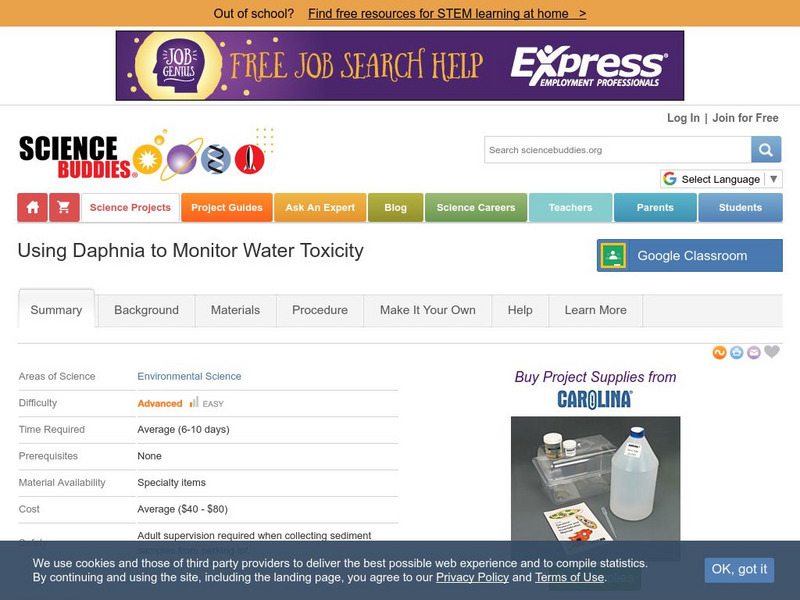

![Minnesota 4 H: Environmental Science Career Guide [Pdf] Handout Minnesota 4 H: Environmental Science Career Guide [Pdf] Handout](https://d15y2dacu3jp90.cloudfront.net/images/attachment_defaults/resource/large/FPO-knovation.png)


